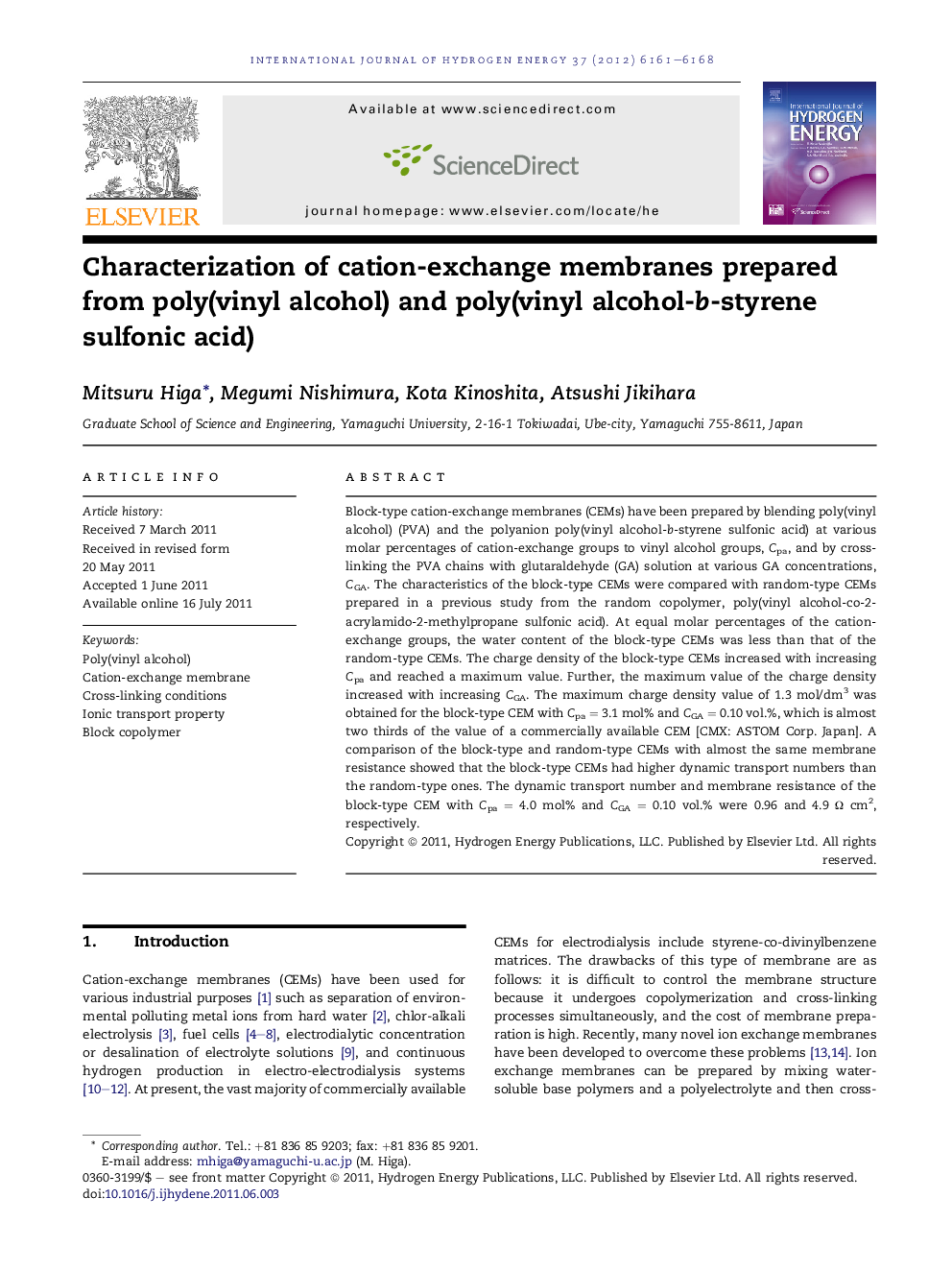| Article ID | Journal | Published Year | Pages | File Type |
|---|---|---|---|---|
| 1276911 | International Journal of Hydrogen Energy | 2012 | 8 Pages |
Block-type cation-exchange membranes (CEMs) have been prepared by blending poly(vinyl alcohol) (PVA) and the polyanion poly(vinyl alcohol-b-styrene sulfonic acid) at various molar percentages of cation-exchange groups to vinyl alcohol groups, Cpa, and by cross-linking the PVA chains with glutaraldehyde (GA) solution at various GA concentrations, CGA. The characteristics of the block-type CEMs were compared with random-type CEMs prepared in a previous study from the random copolymer, poly(vinyl alcohol-co-2-acrylamido-2-methylpropane sulfonic acid). At equal molar percentages of the cation-exchange groups, the water content of the block-type CEMs was less than that of the random-type CEMs. The charge density of the block-type CEMs increased with increasing Cpa and reached a maximum value. Further, the maximum value of the charge density increased with increasing CGA. The maximum charge density value of 1.3 mol/dm3 was obtained for the block-type CEM with Cpa = 3.1 mol% and CGA = 0.10 vol.%, which is almost two thirds of the value of a commercially available CEM [CMX: ASTOM Corp. Japan]. A comparison of the block-type and random-type CEMs with almost the same membrane resistance showed that the block-type CEMs had higher dynamic transport numbers than the random-type ones. The dynamic transport number and membrane resistance of the block-type CEM with Cpa = 4.0 mol% and CGA = 0.10 vol.% were 0.96 and 4.9 Ω cm2, respectively.
► A block-type PVA-based cation-exchange membrane (CEM) has been prepared. ► Its transport number is 0.96 that is higher than that of the random-type CEM. ► The transport number value is almost the same as that of a commercially available CEM.
